8 non-toxic and natural ways to keep your dog free of fleas and ticks

By Rita Hogan
Farm Dog Naturals
Looking ahead towards the upcoming flea season makes me start to have phantom itching episodes. Spring, Summer and Fall are ripe with enemy troops. To successfully win the war, you must start planning now.
You don’t want to have to resort to using toxic pesticide pills and spot treatments. Yuck.
Garlic as a chemical weapon.
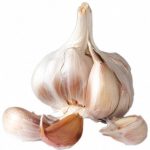
Planning is the answer to effective all natural flea protection. We need to be our own natural defense department and gather an arsenal of weapons against the inevitable onslaught of fleas and ticks.
Yes, I know many of you have heard people say “don’t feed garlic to your pets it will make them sick or kill them”. While this is true, it is also false. Here is why.
Garlic contains thiosulphate, which, given the right dosage, is a liver toxin. However, garlic only contains trace amounts of thiosulphate and you would have to give your dog a very large dose in order to cause harm.
Garlic is a chemical weapon against fleas.
Fleas detest the smell of garlic and by feeding it to your pets, they will be a walking flea deterrent.
Garlic is an anti-fungal, anti-parasitic, and a natural antibiotic that does not destroy beneficial bacteria. I give fresh, organic garlic to my dogs every morning starting in the middle of February through the first freeze — which is usually in November.
When using garlic for your pets, it is important to remember to use fresh, organic clove garlic. No substitutions.
Using the fresh, organic cloves of a head of garlic is the only way to ensure proper dosage and effectiveness. You can safely give your pet 1/4 clove of garlic per every 10 pounds of body weight. If your dog or cat is below 10 pounds, then cut a 1/4 clove of garlic in half (so 1/8 of a clove). I am talking about a normal piece of garlic — not the elephant garlic variety.
No matter how big your pet is, do not give them more than 2 cloves of garlic per day. So if you have a 100 pound dog, still give them only 2 cloves of garlic.
Nematodes, bugs we can all love and appreciate.
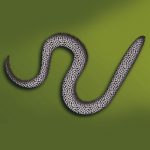
Beginning in March, when the soil temps are above 45°F, you have to start thinking about yard care. One of the most important ways to combat fleas is to kill them before they can reproduce. How, you ask? Flea-eating nematodes. I love them and so will you.
Nematodes are microscopic organisms that eat fleas. I think that is all I need to explain because I am pretty sure I had you at “eat fleas”. The best part is that nematodes are easy to use. Just order them from a garden supply company.
I like Arbico Organics and use a garden sprayer to spray the nematodes on your yard. Spray one time each; in the Spring, Summer, and Fall.
If you live in an area where fleas are prolific, then make sure you keep your lawn cut short.
Diatomaceous earth
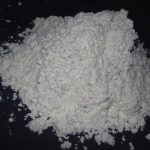
If your dog has a favorite place to curl up outside or if you garden, spread diatomaceous earth (also found at garden supply stores) on the ground.
Diatomaceous earth is a non-toxic powder made up of fossilized organisms called diatoms.
These little gems help break apart flea eggs and dry them out before they can grow into adult fleas.
Plants to grow
 Yards can also benefit from potted mint, rosemary, fleabane daisies, geraniums, lavender and lemongrass.
Yards can also benefit from potted mint, rosemary, fleabane daisies, geraniums, lavender and lemongrass.
These plants repel fleas and ticks, while helping to make your yard an unfavorable habitat for pests.
We All Want A Clean Environment, Right?
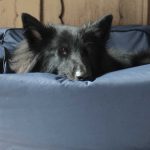
Keeping your dog’s environment and coat clean is just as important as having a tidy yard.
Once per week, wash all of your pet’s bedding in hot water with a natural, unscented detergent. If your pet sleeps with you, make sure you throw your own bedding in the washer once a week.
Keeping your dog’s coat clean with daily grooming is also an effective method for flea infestation prevention.
Brushing your dog’s coat will help remove fleas and ticks plus your dog will love you for it. Not only will you be spending quality time together but brushing helps to stimulate the circulatory system, distribute their coat’s natural oils, and helps to remove toxins.
The flea-test
While grooming, you can try this excellent flea test. Moisten paper towels and stand your dog on them making sure the towels extend beyond the size of your dog’s coat.
If little specks of dirt fall on to the towels and turn red or brown, your dog has fleas.
Another great grooming technique is to go “monkey”. Preen and pick through their fur like a chimp to see if you can find any fleas — paying special attention to their ears, tail, belly and toes.
Just Add Lemon and Rosemary

A great recipe for a flea and tick spray is to take a lemon and slice it so that each piece is thin and round. Put the lemon in a large bowl along with a fresh rosemary sprig and make a tea by adding a quart of almost boiling water. Cover and let steep and cool overnight.
Take out the lemon slices and rosemary sprig and pour the remaining liquid into a spray bottle. Add two drops of cedar-wood essential oil and store in the refrigerator.
Mist your dog’s undercarriage, feet, tail and ears before going outside.
This spray will help keeps fleas and ticks from jumping onto your dog as they do not like the smell of lemon, cedar or rosemary.
Avoid using any repellents that contain the essential oils pennyroyal, wintergreen and clove. They are unsafe for pets.
Fighting the battle from the inside out
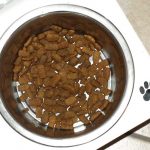
The last part of your plan is to make fleas detest your pooch so they will go somewhere else for sustenance.
You can achieve this by feeding your dog a healthy diet so they will not smell or taste good to both fleas and ticks.
Feed a fresh food diet that is free from additives, fillers and by-products.
Do not feed wheat, soy, or any type of sugar to your dog.
Make sure they are getting enough immune builders like omega-3 fatty acids, probiotics, and digestive enzymes.
A dog with a healthy immune system will be able to fight off and repel insects by using their skin’s natural oils like wolves do in the wild.
Living the All Natural Lifestyle takes some effort especially when it comes to your sweet pooch. The good news is that with a bit of winter planning, you can be well on your way to a successful season without having to resort to using toxic chemicals on your pets and in your home.

Rita Hogan is the canine herbalist and co-founder of Farm Dog Naturals, a herbal product company for dogs. Rita lives in Olympia, WA where she enjoys nature, reading and a sense of community.
